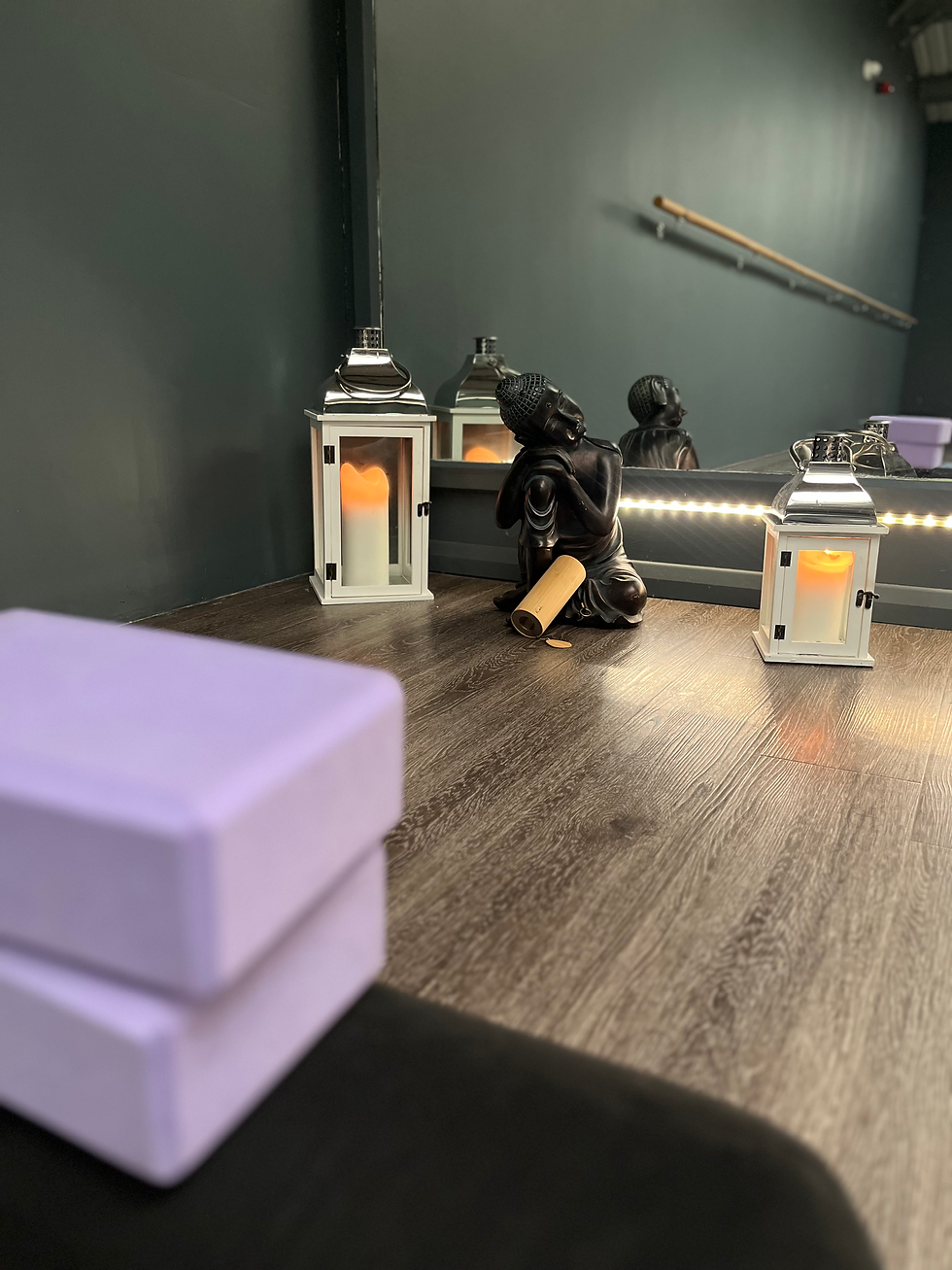Savasana: Your questions answered!
- Vanessa Flow

- Aug 23, 2022
- 3 min read
Your yoga practice is winding down, and your teacher invites you to join them in
savasana. As you lie back and shut down your eyes, your mind buzzes with
questions:
How long will this last?
What's this for?
What makes it the hardest position?
And am I doing it right??
Read on, because all your savasana questions are about to be answered in our
latest blog.

How do you say savasana?
First things first, let's get the pronunciation right. Savasana is pronounced sha-VAH-suh-nuh.
What does savasana mean in yoga?
Savasana is the final posture at the end of your yoga practice. It's a meditative
position where you lie on your back, close your eyes, and rest your body and mind.
The word savasana is Sanskrit, the ancient Indian language used in yoga.
Why is savasana called corpse pose?
You might hear savasana referred to as "corpse pose"; because that's the literal translation of the word from Sanskrit.
And while the word corpse may not bring the most pleasant images to mind, it's
known as this because of the stillness involved.
When we do savasana, we replicate a corpse's physical and mental stillness (while
thankfully still breathing) to access all the mental benefits of total peacefulness.
How do you do savasana?
Physically, here's what you need to know.
Lie on your back with your arms and legs in a relaxed position by the side of
your body
Allow your legs to lie apart with your feet falling naturally outwards
Let your arms settle by your side without touching your body
Your palms should face upwards
Your neck should lengthen out
Tuck your shoulder blades underneath you slightly to open up your chest
Let your breathing settle into a natural rhythm
Close your eyes.

You may want to bring an extra layer to slip on before going into savasana – this will warm your body up as it cools down from your practice.
Mentally, try to relax and clear your mind. Naturally, this is challenging in a busy world, so when thoughts pop into your head, simply observe them and then let them go – it's all part of the process, so never beat yourself up for struggling to empty your mind completely.
What are the benefits of savasana?
While it may feel like you're doing nothing, savasana is actually full of incredible
benefits for your mind and body.
The benefits of savasana are:
It lowers your blood pressure
It relaxes your mind
It alleviates stress and anxiety
It can prevent headaches
It improves sleep
It helps with digestion
It reduces fatigue
It boosts your immune system, preventing illness
It taps into a higher state of consciousness to enhance your general wellbeing
So much more than a lie down!
How long should you do savasana for?
Many yoga classes end with a savasana of anywhere from three to ten minutes, depending on the length and style of the practice.
Sessions involving restorative yoga, yin yoga, or gentler flows may feature a more
extended period of savasana to encourage heightened mental and physical rest.
The longer, the better – a prolonged savasana allows you to enter a deeper state of
relaxation, which increases the benefits you experience.
Can we sleep in savasana?
Nodding off during savasana is completely normal! No need to worry or feel
embarrassed if you do – you're likely to wake up naturally when your yoga teacher gently brings you back into the room.
Ideally, you should try to remain awake to fully experience the practice of stilling the mind, to see how each time you practice savasana how different the fluctuations of the mind can be. You'll soon start to sink deeper into the bliss of savasana the more you practice and you'll be looking forward to the lying down at the end of class.

Why is savasana important?
After any yoga session, it's important to wind your mind and body down, reset your
body temperature, calm your mind, and restore you - ready to tackle life off the mat.
With so many wonderful benefits, it's crucial we don't skip this part of our practice!
Why is savasana the hardest pose?
You may be confused when your yoga teacher refers to savasana as the hardest
pose. After all, isn't yoga about nailing tricky balances and stretches?
In fact, emptying our minds and entering a meditative state is much more challenging
than the physical elements of yoga for most of us (teachers included!).
Busy minds will try to fight against stillness, so it's essential we all work on this part
of our practice to support our physical, mental, and emotional wellbeing.
Relax and reset in our Ribble Valley Yoga studio
Ready to explore the benefits of corpse pose in our warm, welcoming Ribble Valley
yoga studio?
Whether you're brand new to the practice, returning after a break, or a lifelong yogi,
there's a spot waiting for you in our supportive, energising, and nurturing space.
Sign up for your 21-Day Intro Pass to find your flow here.







Comments